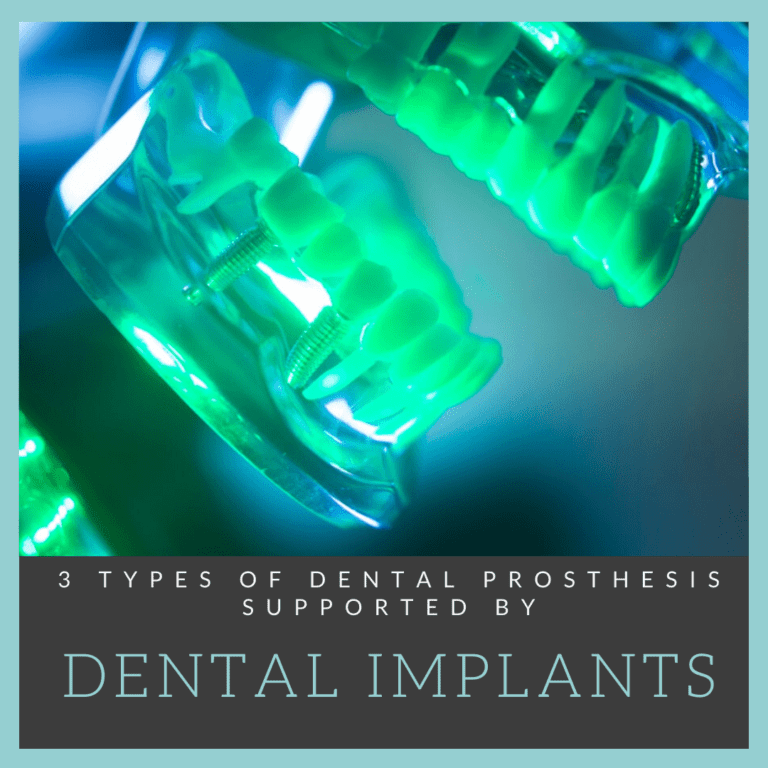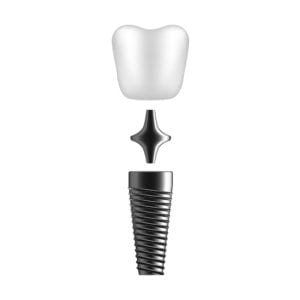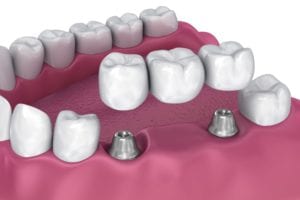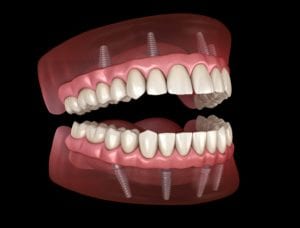3 Dental Prosthesis Supported by Dental Implants

Missing teeth can happen for a variety of reasons. They can fall out due to severe damage or decay, get knocked out in an accident, or need to be extracted to preserve your oral health. No matter what the reason for a missing tooth or teeth, it is recommended to replace the missing teeth once the socket has healed.
Depending on the location of the missing tooth, the number of missing teeth, and your budget, there are a variety of options available to restore missing teeth. One common option is dental implants, which are artificial tooth roots implanted into the jawbone in order to stabilize a dental prosthesis.
Dental implants can be used for single and multiple missing teeth, and can generally be placed anywhere in the mouth, making them extremely versatile. This is because they can support three different types of dental prosthesis, including:

Dental Crown:
Dental crowns are used to repair a single tooth that has been compromised by decay or damage. Traditional dental crowns are fabricated to match the color and texture of the surrounding teeth and are then placed over the affected tooth, encapsulating it. Implant-supported dental crowns work in the same way, however they are placed over a metal post called an abutment that screws into the dental implant. The dental implant itself resides in the jawbone and under the gums. Only the abutment post is visibly noticeable until a temporary dental crown is adhered over it. Eventually, this temporary crown will be replaced with a stronger and more attractive permanent dental crown:

Dental Bridge:
Dental bridges are used to restore multiple missing teeth that are adjacent to one another. An implant-supported dental bridge is composed of one or more pontics, or fake teeth, supported by a dental implant on either side of the gap left by the missing teeth. Implant-supported bridges are often recommended when the natural teeth on either side of the gap are not strong enough to support a traditional dental bridge. To place a dental bridge, these teeth are extracted to make room for dental implants. In cases where the gap is large enough to accommodate a dental bridge, no extraction is necessary. Your dentist will help to determine the exact treatment required.

Dentures:
Traditional dentures are sets of upper and/or lower artificial teeth that can be removed from the mouth for cleaning and while sleeping. Although they can restore an entire arch of missing teeth, they are prone to slipping and can cause speech impediments, gum irritation, and loss of function. However, the main downfall of dentures are easily resolved when they are combined with dental implants. Implant-supported dentures, or fixed dentures, are permanently fixed into the mouth and supported by dental implants. To place an implant-supported denture, about four dental implants are placed with special snap attachments for a denture. In most cases, both the implants and denture can be placed within a single dental appointment. For this reason, implant-supported dentures are commonly called all-on-four implants, same day implants, and teeth in a day.
When supported by dental implants, dental crowns, dental bridges, and dentures can effectively restore missing teeth, as well as damaged or decayed teeth. The versatility of dental implants allows them to be used for a variety of cases so that more dental patients can receive treatment from an implant dentist.






Recent Comments